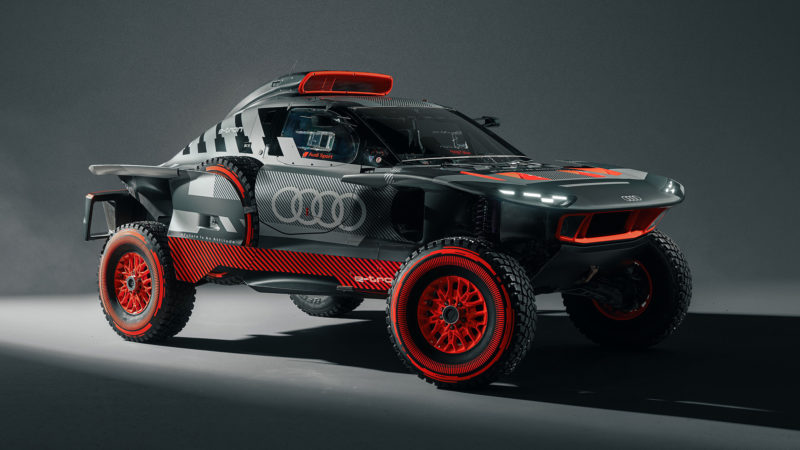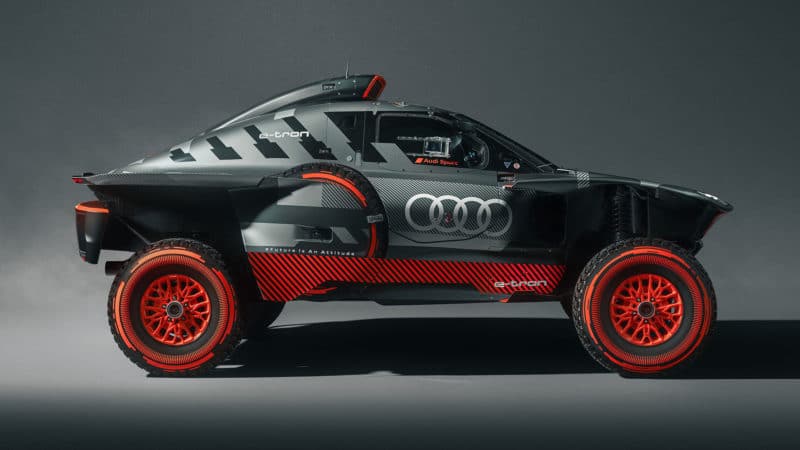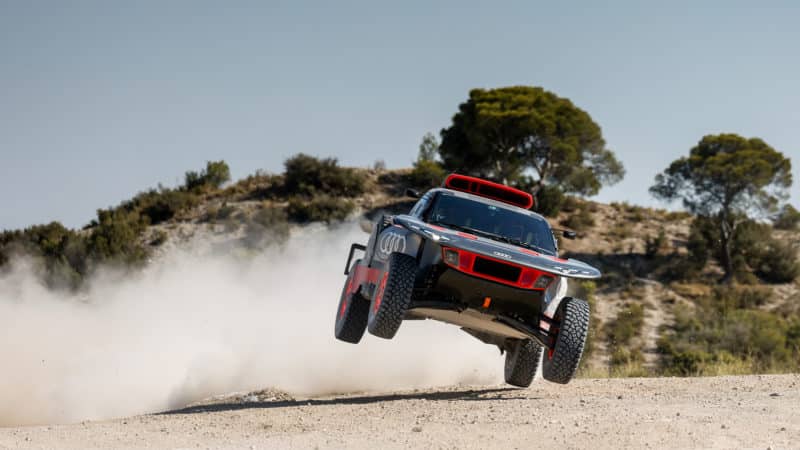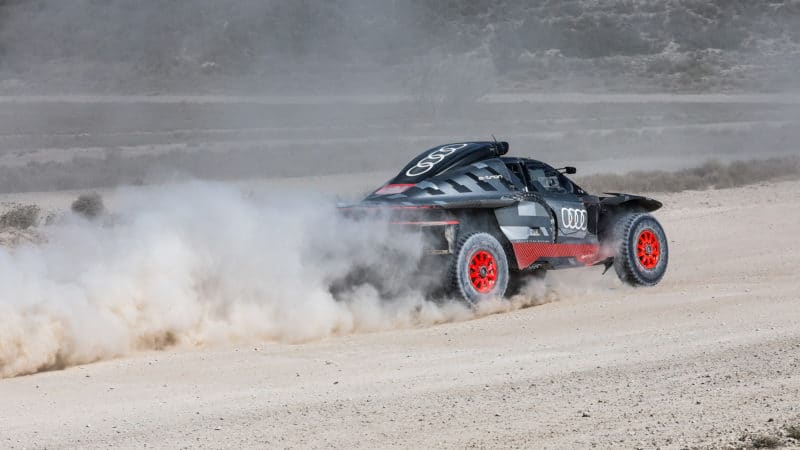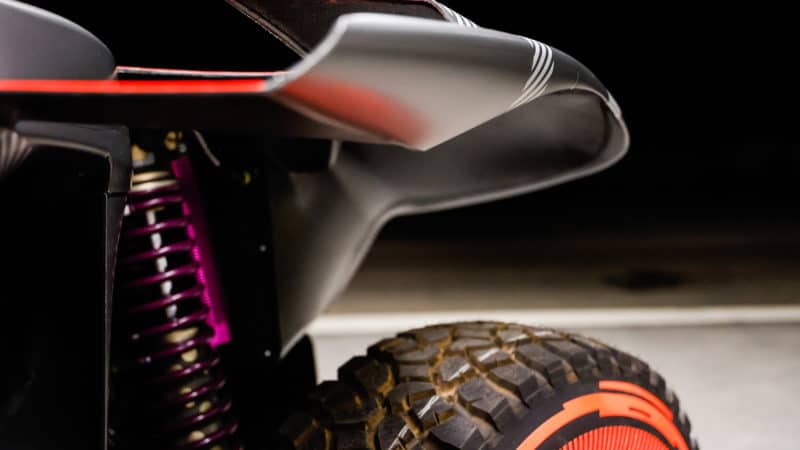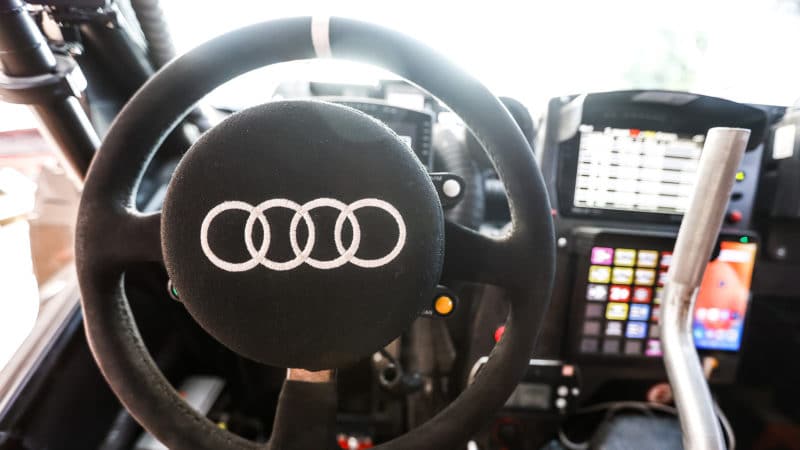Also removed is the larger rear bodywork – referred to as the ‘elephant’s foot’ – again helping additional weight loss and further optimising airflow.
“The word I would use to describe it is ‘agile’,” Sainz told Motor Sport. “The handling of the previous car wasn’t bad, but now it feels lighter and also has a better weight distribution now – it’s easier to change direction.”
Does searching for significant gains in a new bodywork suggest that it’s still struggling to come up with a viable fully electric power unit solution to take on those unforgiving desert stages, meaning it needs to look elsewhere for efficiency? Perhaps – the e-tron’s top speed remains 170km/h (105mph).
“Everyone saw we had reliability issues,” says Quandt. “We’ve also addressed the the problems we had with shock absorbers [Peterhasnel had a terrifying shunt early on at Dakar ’22 when a wheel came off, suspension and all].
“Then the main thing was obviously the weight. We needed to go on a big diet!”
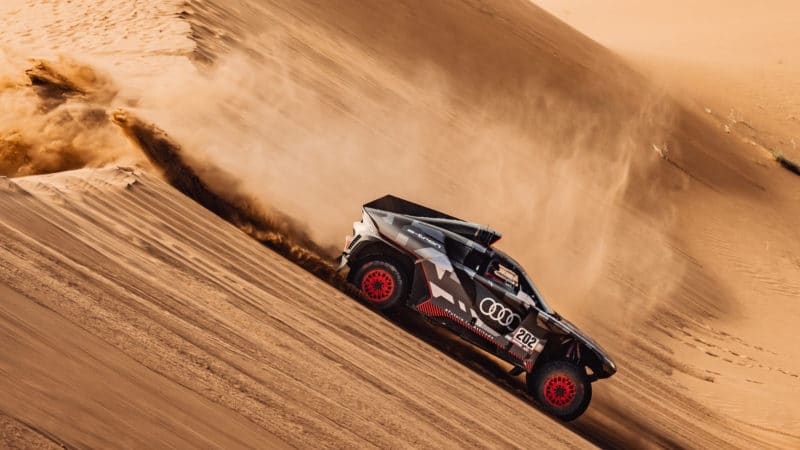
The Dakar ’22 car claimed four stage wins; it has now been substantially slimmed down
Audi
Quandt’s Q-Motorsport outfit, which is running the project for Audi, has plenty of Dakar experience, but the team boss alluded to his and the manufacturer’s competitive experiences working against each other when the first car was made.
“Basically, Audi’s background is more circuit racing, with bodywork closed for the road, but a lot of that doesn’t make sense in the desert,” he says.
“The new body is much more slim, which is also an improvement on the aerodynamic side. We now use less fuel and less energy, which I think is what is interesting [about the E2].”
Though it refuses to confirm this, it seems likely that Audi’s ultimate aim at Dakar is going all-electric – it hasn’t quite got there yet.
The electric hybrid still utilises the 2-litre, four-cylinder engine which powers it to so many DTM victories.
Operating in what Audi says is the optimum window of 2,500-4,000rpm, the ICU howls away at a constant pitch when the electric motors charging level is in a time of need.
